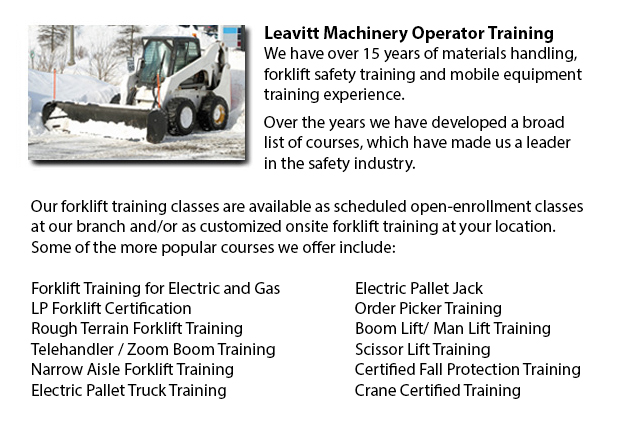
Guelph Skid Steer Ticket - On a skid-steer loader, the lift arms are at the side of the driver together with pivot points at the back of the driver's shoulders. This makes them different compared to a traditional front loader. Because of the operator's closeness to moving booms, early skid loaders were not as safe as traditional front loaders, specially in the operator's entry and exit. Modern skid-steer loaders now have many features to protect the driver including fully-enclosed cabs. Similar to other front loaders, the skid-steer model can push materials from one site to another, can load material into a trailer or a truck and could carry material in its bucket.
Operation
There are several times where the skid-steer loader could be utilized rather than a big excavator on the jobsite for digging holes from within. To begin, the loader digs a ramp to be used to excavate the material out of the hole. As the excavation deepens, the machinery reshapes the ramp making it steeper and longer. This is a remarkably functional way for digging beneath a building where there is not enough overhead clearance for the boom of a large excavator. Like for instance, this is a common scenario when digging a basement beneath an existing house or building.
There is much flexibility in the accessories that the skid steer loaders are capable of. For instance, the conventional bucket of many of these loaders can be replaced with various attachments that are powered by the loader's hydraulic system, consisting of cement mixers, pallet forks, backhoes, tree spades, sweepers, mowers and snow blades. Some other popular specialized buckets and attachments include wheel saws, snow blades, trenchers, angle booms, dumping hopper, wood chipper machines, grapples, tillers and stump grinders rippers.
History
The front end 3-wheeled loader was invented during the year 1957, by Louis and Cyril Keller in their hometown of Rothsay, Minnesota. The Keller brothers made this machine in order to help mechanize the method of cleaning in turkey barns. This machine was compact and light and consisted of a back caster wheel that enabled it to turn around and maneuver within its own length, allowing it to execute the same jobs as a conventional front-end loader.
During 1958, the Melroe brothers of Melroe Manufacturing Company in Gwinner, N.D. acquired the rights to the Keller loader. They hired the Keller brothers to continue refining their loader invention. The M-200 Melroe was the result of this particular partnership. This model was a self-propelled loader that was introduced to the market during nineteen fifty eight. The M-200 Melroe featured a a rear caster wheel, a 12.9 HP engine, a 750 lb lift capacity and two independent front drive wheels. By nineteen sixty, they replaced the caster wheel together with a rear axle and launched the first 4 wheel skid steer loader which was referred to as the M-400.
The M-400 immediately became the Melroe Bobcat. usually the term "Bobcat" is utilized as a generic term for skid-steer loaders. The M-440 was powered by a 15.5 HP engine and had 1100 lb rated operating capacity. The business continued the skid-steer development into the mid nineteen sixties and introduced the M600 loader.
-
Guelph Warehouse Forklift Training Classes
Guelph Warehouse Forklift Training Classes - Warehouse training classes exist for the reason of raising awareness regarding common warehouse hazards. Students learn the important safety procedures that are necessary to warehouse safety. An emphasis i... More -
Guelph Forklift Operator Certification
Guelph Forklift Operator Certification - Certification for forklifts are needed to guarantee the safe use of forklifts for those employers in construction, industrial and warehouse settings. The training has to involve a method of education plus some... More -
Guelph Crane Training School
Guelph Crane Training School - The crane training school offers industry-relevant programs. Courses provide trainees with learning results that match current industry demands. Our small class sizes combine hands-on experience and theory. Our qualifie... More -
Guelph Heavy Equipment Training Programs
Guelph Heavy Equipment Training Programs - At whatever given construction site, there are usually various kinds of machines that are ready to be used. These heavy and light equipment need both operators to run them and mechanics to fix them. Apprenti... More -
Guelph Zoom Boom Ticket
Guelph Zoom Boom Ticket - Zoom Boom Training focuses on correctly training prospective operators on variable reach forklifts. The training goals include gaining the understanding of the equipments physics and to define the tasks of the operator. This... More -
Guelph Heavy Equipment Training
Guelph Heavy Equipment Training - Commonly, the different types of heavy equipment training are divided into 2 categories of machinery: those that have rubber tires and tracked vehicles. Tracked vehicles consist of items like for instance bulldozers,... More -
Guelph Aerial Lift Safety Training
Guelph Aerial Lift Safety Training - Each year, there are roughly 26 construction deaths due to the use of aerial lifts. Nearly all of the craftsmen killed are laborers, electrical workers, carpenters, painters or ironworkers. Nearly all deaths are c... More -
Guelph Overhead Crane Certification
Guelph Overhead Crane Certification - The overhead crane training certification course is designed to be effective with all those participating regardless of literacy or language limits. The course has two parts: a practical training session and a cl... More

Forklift Certification Guelph
TOLL FREE: 1-888-254-6157
Guelph, Ontario
forkliftcertificationguelph.com
Email Us
About Us


